iPhone SE 2020 release date, price, specs and all you need to know
The iPhone SE 2020 is Apple's brand new cheap iPhone, starting at just $399 / £419 / AU$749 / Rs 42,500, yet it still offers the specs, camera and screen size of something you'd expect to be much more expensive.
It isn't called the iPhone 9, as some had expected, as the company has decided to use the iPhone SE moniker first used in 2016 (so we're be calling it the iPhone SE 2020 for clarity here – and no, Apple hasn’t told us officially what the SE stands for).
It essentially replaces and improves on the iPhone 8 (which is now discontinued and Apple's product page redirects to a splashy notice about the iPhone SE 2020) while maintaining the same price point as the original iPhone SE.
Apple launched the new iPhone SE to muted fanfare this time around, thanks to the changing times around us all, delivering it on press release rather that calling in journalists from around the world to congregate in the Steve Jobs Theater.
Latest story: According to a trusted leaker, an iPhone SE Plus is on the cards and may be unveiled soon. It's likely to have a larger display, but little else is known about the phone.
Prefer to watch a video to learn about the new iPhone SE? We've got everything you need to know in this handy clip below:
Here’s everything we know about Apple’s new and cheaper iPhone – and it’s good news if you were missing the home button after 2019's all-screen line-up.
- Discover all of the best iPhone SE deals to pre-order
iPhone SE 2020 release date and price
The iPhone SE 2020 release date is set for Friday April 24, and pre-orders are open now. They began on Friday, April 17 through Apple's official website and other retailers.
The iPhone SE price starts at $399 / £419 / AU$749 / Rs 42,500, meaning it's the same price in the US as the original iPhone SE (but higher in the UK). The base model comes with 64GB of storage, with 128GB and 256GB models also available for a higher price (which you can see listed below).
| Model | US | UK | Australia |
| 64GB | $399 | £419 | AU$749 |
| 128GB | $449 | £469 | AU$829 |
| 256GB | $549 | £569 | AU$999 |
In the US, Apple is offering the new iPhone SE at $16.62/month through its financing plan or, if you have something like the iPhone 8 to trade-in, just $9.54/mo or $229. If you are upgrading from the original iPhone SE or iPhone 6, you'll only get $30 toward the full price of the device.
- Looking to pre-order? The best iPhone SE deals in the US
- Live in the UK? These are the best iPhone deals for the UK
iPhone SE 2020 design and display
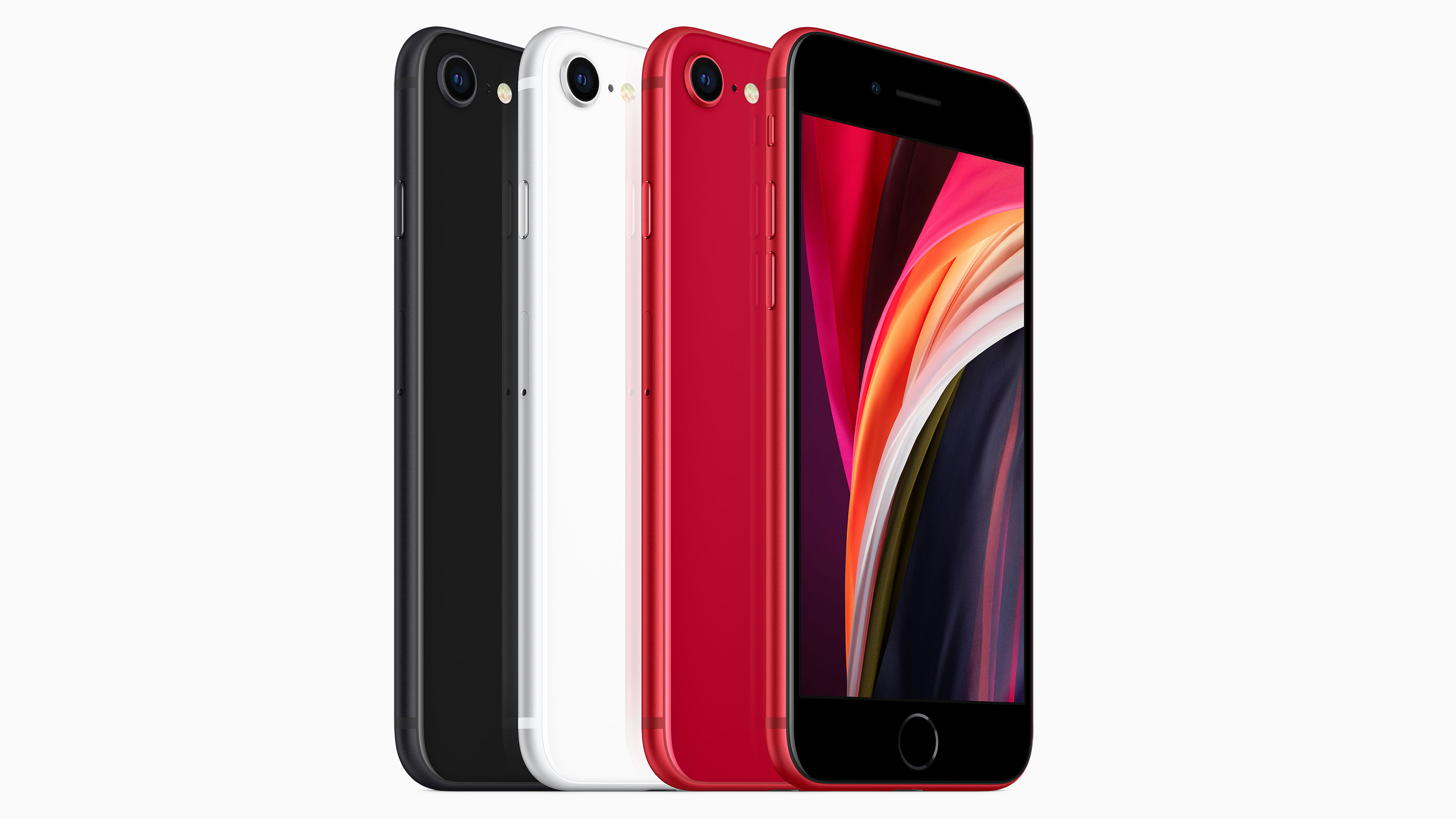
The iPhone SE is available in Black, White or Product Red shades.
If you’re familiar with the design of the iPhone 8 (and the iPhone 7, iPhone 6S and iPhone 6, come to think of it) then you already know what the new iPhone SE looks like.
It’s backwards compatible with all iPhone 8 cases, and has the same 4.7-inch Retina HD Display as found on the last 4.7-inch model (1334 x 750) with a 326 pixels per inch sharpness.
It gets the same TrueTone technology as the latest models too, enabling it to adapt to the lighting conditions around you and make the screen’s white balance to warmer or cooler.
It's also using the Haptic Touch system that Apple brought to the iPhone 11 range, where a long press will activate a separate menu and buzz designed to replicate the feeling of a physical press.
As the design is almost identical to an iPhone 8, that means there’s a Touch ID home button built into the bottom bezel on the phone’s front.
You’ll be able to unlock your phone with your fingerprint using this, rather than using Face ID as on other modern iPhones - which for some people will be a little simpler to use (if a tiny bit less secure).
It also means there’s no notch here, as there is on several recent iPhone models. Instead, there's a bezel at the top of the display, as well as at the bottom, with the top bezel housing the selfie camera.
The phone is IP67 dust- and water-resistant, which means it’ll be able to survive the odd splash of water or outing in the rain.
You’ve got the choice of three colors: black, white or Product Red (that’s just another name for red).
On the bottom edge of the iPhone SE you’ll find a Lightning connector for charging your device. As was widely expected, there’s no 3.5mm headphone jack, so you’ll have to purchase an adapter if you want to use wired headphones.
iPhone SE 2020 specs and battery life
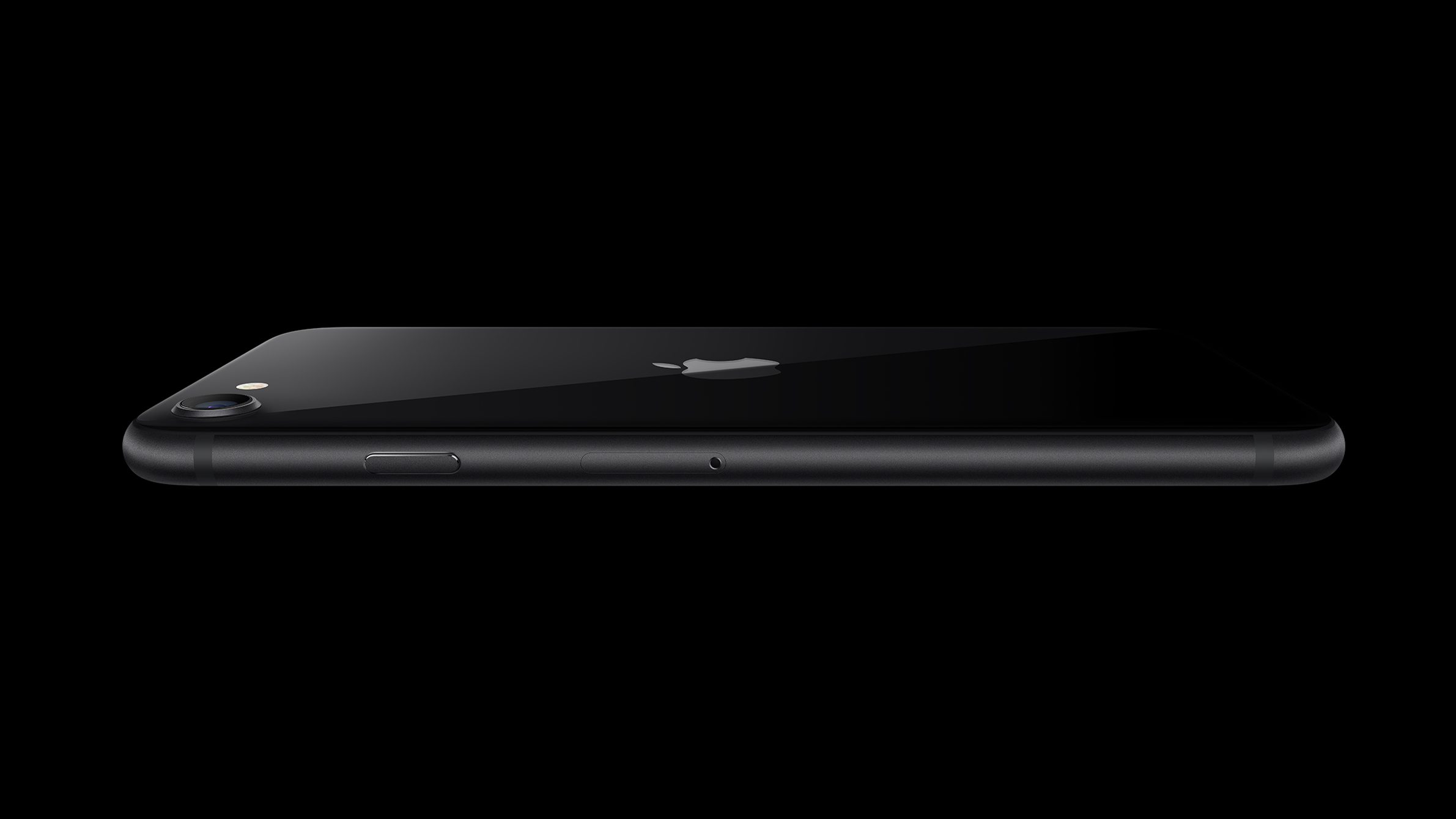
The iPhone SE in Black
While the design of the iPhone SE 2020 might seem similar to the iPhone 8, inside it’s a different story. Where the iPhone 8 used the A11 Bionic chipset, the new iPhone SE packs the same A13 Bionic engine that powers the iPhone 11 range.
That’s a pretty big improvement for the new iPhone SE (Apple says it's up to 40% faster than the iPhone 8, and more than twice as fast as the iPhone SE 2016 that it’s replacing in name).
It allows the speed under the finger to be improved in a range of ways – faster snapping between apps is a given (although we’ve not tried the phone yet ourselves to confirm this), and things like video editing on your device and computational photography (more on that in the next section) are now possible.
What’s interesting is that Apple is stating that the iPhone SE's battery life will be the same as that of the iPhone 8, despite the A13 chip being more efficient in terms of power.
That means you should be expect up to 12 hours of internet use, or – as we noted in our iPhone 8 review – it’ll last just about a day on a single charge.
You'll be able to buy a separate iPhone fast charger to power-up your new iPhone SE more quickly, so if you go for one with 18W of power or more you’ll be able to get topped up in less time than using the standard USB-to-Lightning plug that comes in the box.
Oh, and you’ll be able to charge the new iPhone SE wirelessly with a Qi charger too. For storage, as mentioned your options are 64GB, 128GB or 256GB – and there’s no microSD support for expanding that, so make your decision wisely.
According to a listing on China Telecom, the iPhone SE will come with 3GB of RAM. Apple hasn't confirmed this, and it's unlikely to officially give us this sort of detail so we'll have to wait for someone to teardown the new phone to confirm it.
This same report also says the cell inside the phone is 1,821mAh, which is the same as the battery inside the iPhone 8.
The phone will come running the latest version of iOS 13 out of the box, so you can expect all of the software features that the most recent iPhones have.
iPhone SE 2020 camera
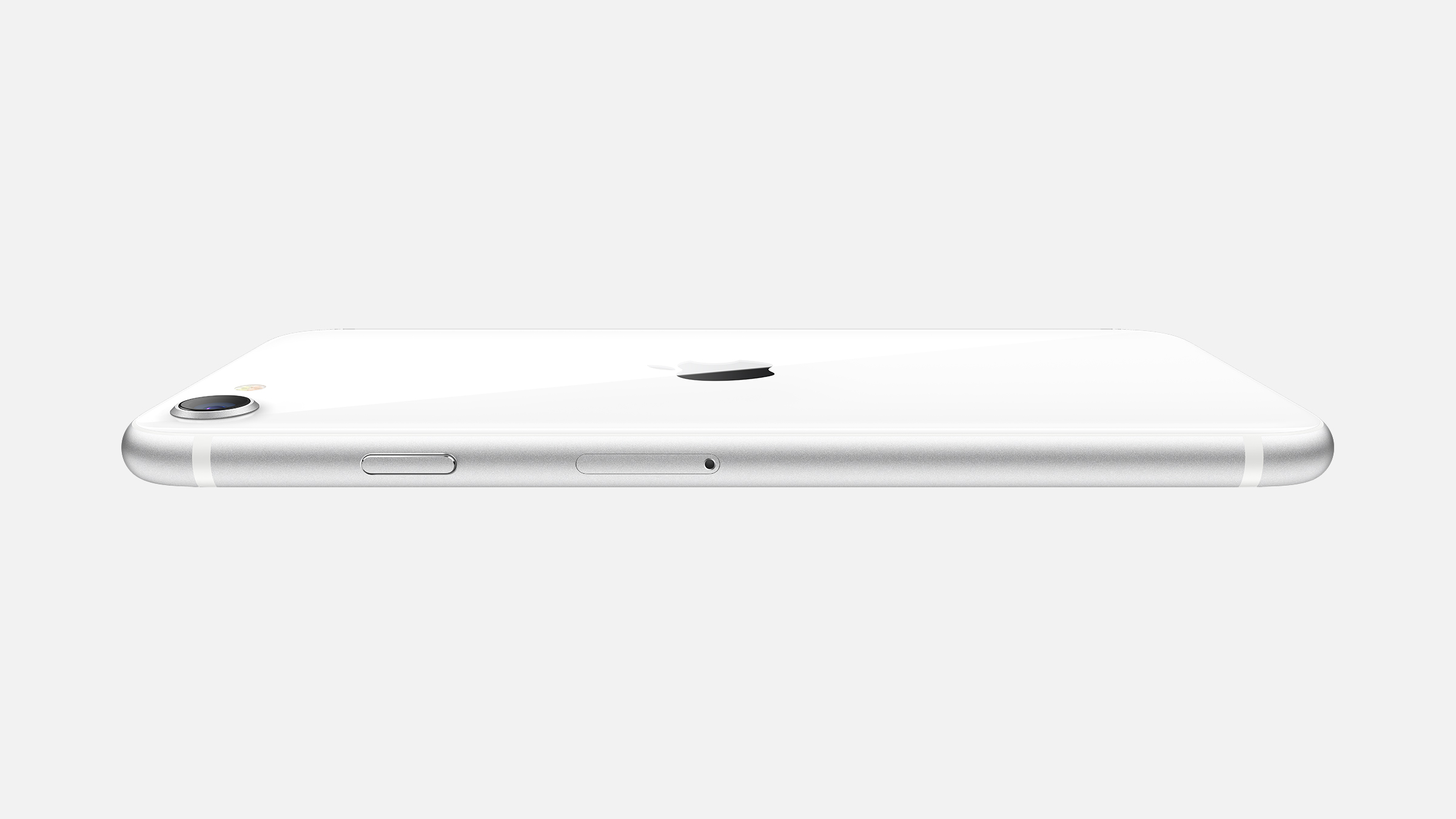
The iPhone SE in White
The new iPhone SE 2020 camera is where Apple has placed a lot of importance, talking about the extra capabilities it’ll be imbued with.
It’ll be based on similar specs to those seen in the iPhone 8, which comes with a 12MP sensor and an f/1.8 aperture for fairly decent low-light photos – although it’ll be a far cry from the high-end photography features of the iPhone 11 range.
If you want a strong performance at night mode, you won't be getting it with the iPhone SE 2020, despite having the more advanced image processor inside.
Despite only packing a single sensor (not even the dual-sensor setup found in the iPhone 8 Plus) Apple is still lauding this as the best single-sensor snapper it’s ever created – thus making it even better than the iPhone XR’s camera.
So while the hardware seems very similar to that in the iPhone 8, with a six-element lens setup and optical image stabilization, the A13 chipset allows for better correction of shake during video playback, as well as a smart image processor to make your snaps look better.
It also brings portrait mode, and the full gamut of effects, from standard background blur to the odd High Key Light Mono, to the single sensor as well, as we saw with the iPhone XR.
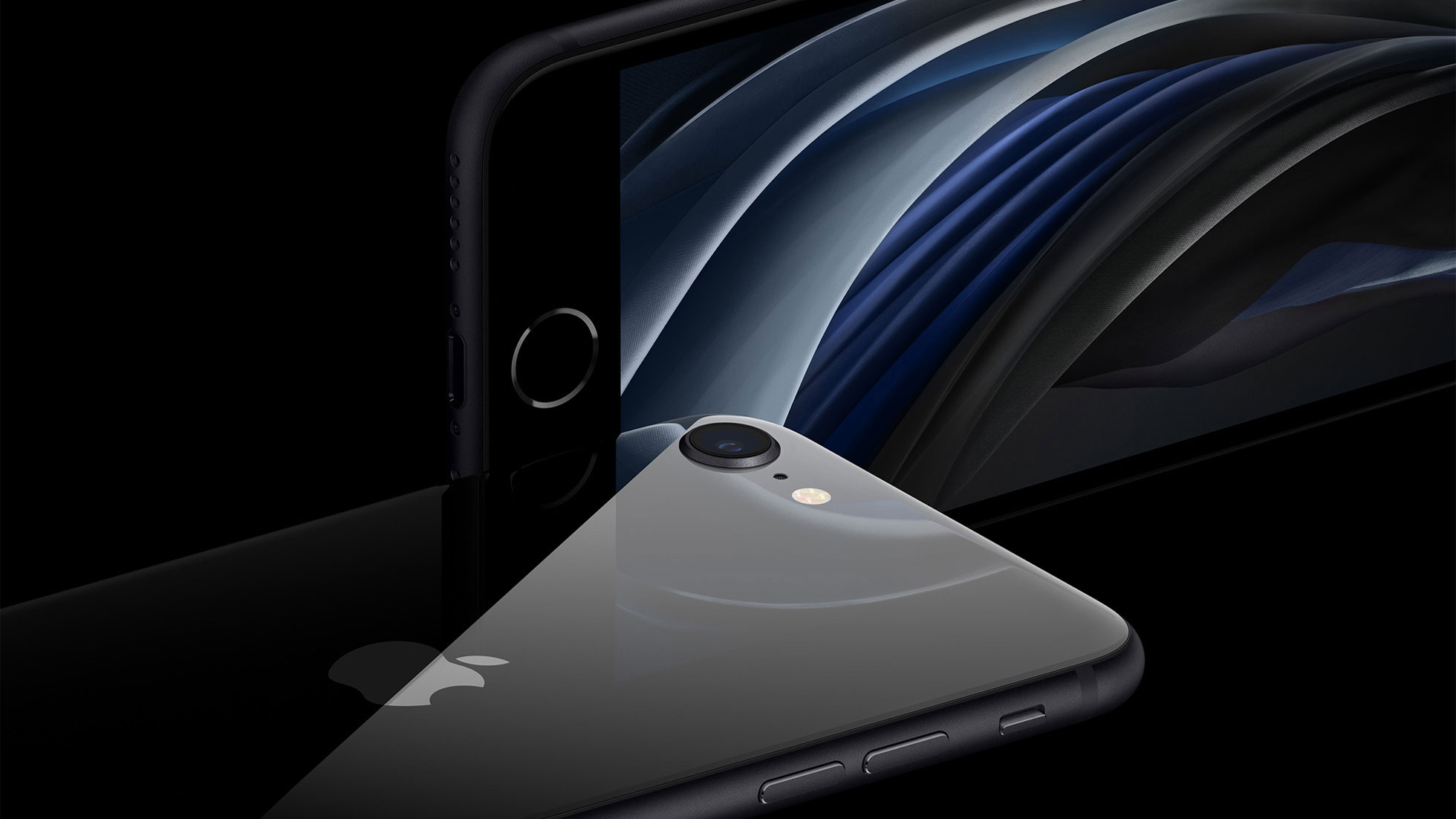
The iPhone SE in black, showing both the front and back
Like that model, it’ll only be able to add those effects to snaps of humans, but our review of the XR found that it was a poor relation to the portrait capabilities of a phone like the iPhone XS, which has extra hardware to do the job.
The front-facing camera has been given the same algorithmic upgrade as the rear sensor, meaning portrait mode selfies without the need for a separate sensor to check the depth and find the subject.
However, what Apple has done here is bring its smart computational photography to a cheaper iPhone, meaning it’ll let the onboard engine do the work in terms of making your pictures look as good as they can.
It’ll be as good as the iPhone 11 range at working out what’s being photographed and analyzing each section – even going as far as dividing up the separate elements of facial features – and brightening and sharpening where needed.
It’ll (theoretically) be able to combine a range of exposures to create a clear, bright image with very low shutter lag under the finger, and be able to shoot high-end 4K video at 60 frames per second too.
With extended dynamic range, video recording is given greater power too, allowing highlights and shadows to be improved and enhanced with a basic movie - all features that Apple is hoping will make this an incredibly powerful stills and video recorder for a much lower price.
Given that the new iPhone SE is coming with a similar price tag to the iPhone 8, but with the promise of much better photos, you can see why Apple is going to be making a big deal about the camera upgrade.
How does the iPhone SE 2020 compare to the iPhone 11 range?
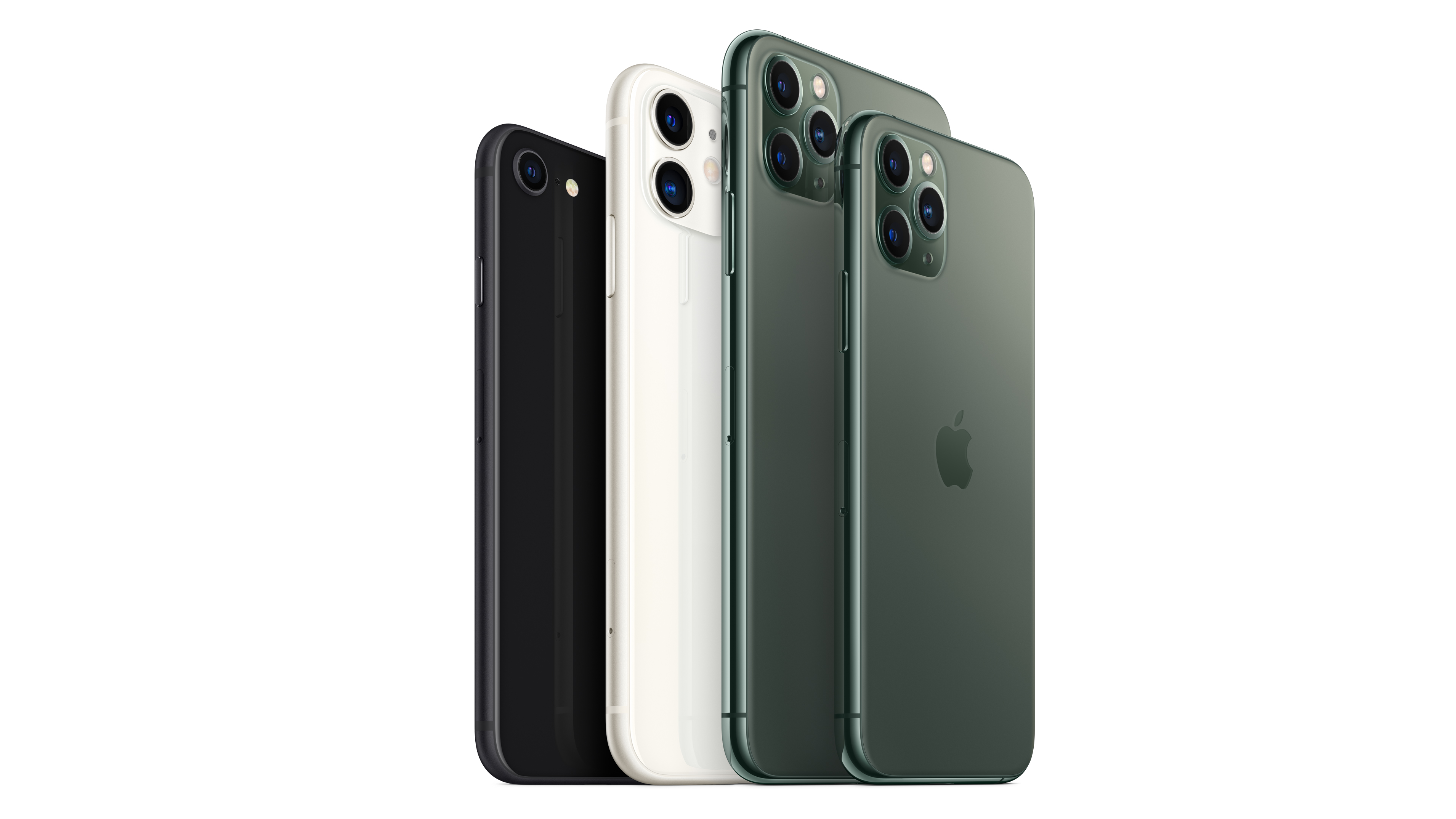
The iPhone SE (left), iPhone 11, iPhone 11 Pro Max and iPhone 11 Pro
Well, for starters, the iPhone SE 2020 will be a much cheaper device that the entry-level iPhone 11 (as you’ve probably worked out) – in fact, it’s half the cost.
A lot of what’s been sacrificed to keep the price down is in the design: the screen technology and quality on the iPhone 11 is far ahead of that in the new iPhone SE, which is using the same screen setup as the iPhone 8 from 2017.
By repurposing the iPhone 8’s design, and imbuing it with a faster engine and the smarts that allows, Apple was able to offer the cheaper iPhone in the same way it launched the iPhone SE in 2016 – all the benefits of the older design but with more powerful innards.
Users who hate the thought of losing the home button should be really considering checking the new iPhone SE out as soon as possible – we’ll try and get our hands on one as soon as we can to tell you how it performs – as it’ll likely be the last phone Apple makes with this piece of ‘physical’ hardware (don’t forget, it’s not actually a clickable button).
It’ll be the phone many tell their parents to buy, as it’ll last at least three cycles of new iOS launches, if not more – so stay tuned to see just how well it fares.
- Everything we know about the iPhone 12
0 comments:
Post a Comment